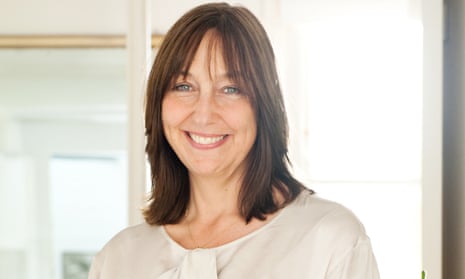Had you always wanted to start a business?
Totally, I was one of those kids who played shop from as young as I can remember. I was always making a stall in the garden, or trying to sell my mum’s grocery cupboard back to her. I started my first business, a design company, with a friend when I was 28. But I didn’t open the first Cath Kidston store until I was 34. Before that, I’d worked in shops and galleries.
I had no confidence when I was young; fear held me back for a long time. I was always very creative and thought: “If you’re creative, you’re probably not a business brain”. But that’s such a myth.
Who inspired you?
When I left school my parents were very unambitious for me. They thought I’d go to London, work somewhere and then probably marry somebody – that’s the way it was in the 1970s.
But I had a lovely cousin, Belinda Bellville, who was a dress designer. She was very talented and had a cool company called Bellville Sassoon. She was, in a sense, a role model. I used to go and stay with her and watch her go out to work. She was fun, creative and interested in everything. And, when I came to work in London, Belinda was very supportive. She was someone I could aspire to be like.
But the big turning point came when I got a job working for a decorator called Nicky Haslam. He was just a brilliant, supportive character. He allowed me to do so much stuff, when I hadn’t a clue. He is the person I’m most grateful to, because he gave me some confidence. I needed that, otherwise I would never have started.
You’ve spoken publicly about your dyslexia before, did that play a part in your business?
For a long time I didn’t know I was dyslexic. My mum didn’t tell me until I was 24, she said: “I didn’t want you to think you were odd”. I’d come from a different generation. Now I get contacted by kids who explain their form of dyslexia to me, and often I think: “Oh, that’s me, I never knew that was dyslexia”.
At school, I could always manage subjects that I could visualise. In maths, for example, I could visualise fractions but I found algebra complicated because I couldn’t understand the purpose of it. When branding a creative business, it’s a real advantage to keep one’s eye on the bigger vision. I find the bigger picture exciting and the very small detail exciting, it’s the middle bit I struggle with. If you are dyslexic, I think finding the right people to work with is important. I always had a good accountant and I needed people to organise the ideas.
What’s been your proudest moment?
When I started Cath Kidston vintage wasn’t fashionable, so my business was out of synch. For five years I ran the interior design business alongside Cath Kidston. That paid all the bills and subsidised my shop. It was a struggle doing both, but there were people whose style and taste I really rated who were supportive of the Cath Kidston brand. I thought: “I’ve got to hold on to this and hope that the timing [for vintage style] comes through”. Then, one day, I was reading the paper and something was described as being “very Cath Kidston”. That was surreal, and such a big moment to think: “OK, it’s something that’s defined”.
What’s it like having a business named after you, particularly when you’re no longer the boss [Kidston remains a shareholder, but no longer has a role in the business]?
When I started the business, I never knew it would grow, or I would never have called it Cath Kidston. I’m not someone who wants to be famous, for me, it’s slightly embarrassing. It was before the internet [was widespread] and people looked you up in the phone book, so I used my name because that was linked to my interior design work. But I had a very clear understanding that once I’d sold my business, I’d sold my name.
Is there anything you’d do differently?
I would have been braver younger. It took me a long time to step away from a job and the safety and security of a regular income. There are many more things I’d like to do in the future and it’s a case of fitting everything in.
Actually, I quite fancy doing another small business where I can get my hands dirty – if I were to start something, it would be in design. I’m beginning to get itchy now. I miss the routine of work, the office banter, the people – it was just such a joy.
Do you get lots of requests for advice now?
A lot and I like trying to help if I can. I take on about three or four small businesses at a time. Otherwise, I try to do things like today [Kidston was speaking at an event for The Budding Entrepreneur Club].
For me, it’s all about the passion for an idea. I do find a lot of people are just excited to try to make a lot of money. If you’re going to do that, you’re likely to be disappointed. When I set out with Cath Kidston, I remember thinking: “I will have really done well if I’m earning £30,000 a year”, which back in 1992 was quite a lot. So I wanted to earn enough not to be fearful about cash, but my actual goal was to do something original and feel proud of that idea growing.
Cath Kidston spoke at an event organised by The Budding Entrepreneur Club.
Sign up to become a member of the Guardian Small Business Network here for more advice, insight and best practice direct to your inbox.

Comments (…)
Sign in or create your Guardian account to join the discussion